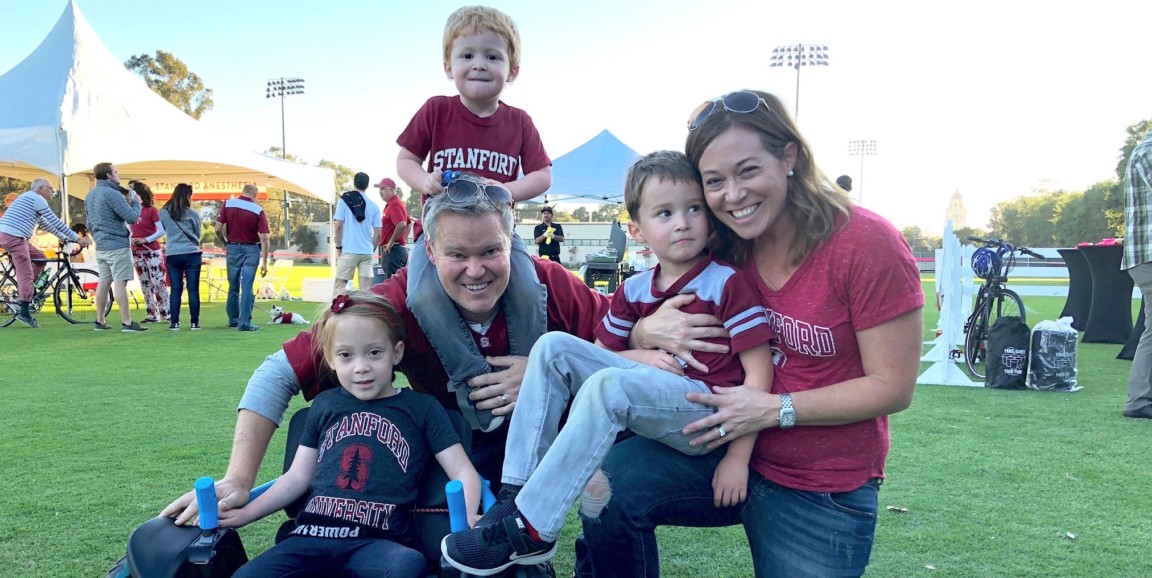Cori Poffenberger, MD, is a physician in the Stanford Department of Emergency Medicine, with three children under the age of six. At a recent department tailgate party, her daughter Eliza was an instigator in multiple games of tag, chasing her brothers and the other children across the soccer field outside the stadium. The sleek, low-riding Power Wheels racer Eliza was using upped the frenzy of the chase, and all of the children shrieked with laughter.
Eliza has spina bifida. She's had 13 surgeries in her 6 years of life, which means Poffenberger has had plenty of experience on both sides of the equation — as a clinician and as the mother of a patient with a disability.
Poffenberger is a second-generation clinician, but neither she nor her father, a retired general surgeon, received instruction in medical school on how to treat patients with disabilities. She has made it a personal mission to transform our approach to inclusion and accessibility, and recently shared with me tips for physicians.
Choose your language carefully
The language we use around disability should ensure people feel valued and not objectified. My daughter has spina bifida, she does not suffer from spina bifida. My daughter does not use a handicapped restroom; she uses an accessible restroom. Her wheelchair is an important tool that enables her freedom and independence; she is not ‘wheelchair-bound.’ She is not an inspiration nor is she a burden. Her twin brother is not the ‘normal’ one. He is a child without a disability.
Consider your mindset
Think about how you can adapt systems and processes in order to promote independence and function for people with disabilities. The medical model of disability, which is the paradigm we are most familiar with, suggests that people who do not fit a specific type — the square peg in the round hole — are disabled, and that medical interventions should focus on ‘fixing’ them. In contrast, the social model of disability states that the round hole creates the disability.
Consider a deaf person: within the deaf community they are not restricted in their ability to function. It is only when they interact with the hearing world that they experience disability. If you focus on how to make the structure fit the patient you can be a positive force for change.
Try not to assume
Bias and assumptions have the potential to compromise care for people with disabilities in a variety of ways. For example, when a patient with autism spectrum disorder presents with an ankle injury, the treating physician might speak only to her family member, presuming she cannot participate in her own care. A physician might not perform a pelvic exam on a patient in a wheelchair, due to the presumption that she cannot be sexually active, or due to the inconvenience of transferring a person with limited physical mobility into a pelvic bed. If we are cognizant of pre-existing biases, we can minimize the impact that those biases will have on our patients.
Ask
My daughter should be seen first as a human and not as a disability. She should be included in discussions about her care. When caring for a patient with disability, strive to always address the patient first, then families and caregivers. Ask the patient how you should conduct the history and exam. Ask about their goals for medical care. And always take the patient's thoughts about their condition and their wishes seriously.
Be honest
If you are unfamiliar with a condition, say so. Be open-minded. This goes back to asking: ask me, ask my daughter. We have a lot of experience with this disability, and if you enlist our help, everything will run more smoothly.
Photo by Susan Coppa




